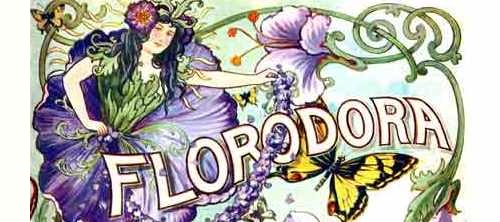Pas de biographie disponible.
Compositeur Musique additionelle Librettiste Parolier Metteur en scène Chorégraphe Producteur création Producteur version

Musical
Musique: Leslie Stuart • Paul Rubens • Paroles: Edward Boyd-Jones • Paul Rubens • Livret: Owen Hall • Production originale: 2 versions mentionnées
Dispo: Résumé Synopsis Génèse Liste chansons
Genèse: Upon opening in London on 11 November 1899 at the Lyric Theatre, the show originally starred Evie Greene, Willie Edouin and Ada Reeve Running for an astounding-for-the-time 455 performances, and closing in March 1901, the show would prove as a training ground for numerous up-and-coming stars of the British theatre. After moving to the Casino Theatre on Broadway in 1900, the spectacle ran for an astonishing 552 performances – the first instance of a London production achieving such a Broadway run, and only the third longest run on Broadway of any theatre piece up to that time. The show was subsequently mounted in Australia in 1900 by J. C. Williamson where it enjoyed another incredibly long run. In addition to the numerous local productions being mounted throughout the English-speaking world and beyond, including productions translated into more than a dozen languages, the show toured extensively with numerous local touches, and engaging audiences both domestically as well as around the world as a result. The Original Cast Album was made as well, featuring all six original sextet members from the New York Cast: Marie Wilson, Agnes Wayburn, Marjorie Relyea, Vaughn Texsmith, Daisy Green and Margaret Walker. Recorded on a series of six 78 RPM gramophone records with a full libretto enclosed, the album was a first for musical theatre at that time. London's West End staged two successful revivals in 1915 as well as in 1931, and several Broadway revivals enjoyed great success as well, the first being mounted a mere year after the closing of the original production in 1901 followed by another notable foray into the public eye three years later. In one of the more well-known revivals to modern audiences, a young Milton Berle played one of the Florodora Boys in a production mounted for the 1920–21 Broadway season. More recently, the show was revived once again at the Finborough Theatre in January 2006 for the first professional London production that it had enjoyed in many years. Florodora's famous double sextet, "Tell Me Pretty Maiden", became the most successful show tune of its time. Other songs ranged from traditional waltzes such as "The Silver Star of Love" and "The Fellow Who Might" to the more quirky type rhythmic and long-lined dance numbers for which Stuart was known. A good part of the success of the musical was attributed to its lovely sextet of chorines, called "the English Girls" in the score, but soon popularly dubbed the "Florodora Girls". More than 70 women, each 5 ft. 4 in. (about 1.63 m) tall and weighing in at 130 lb (59 kg) played these roles in the first run of the play. Pretty and petite, the girls were also the object of a great deal of popular adoration, and many young male admirers persuaded a good number of the girls in the show to leave and settle down. A 1930 MGM film starring Marion Davies was called The Florodora Girl.[3] and in the Our Gang Follies of 1936 the children's troupe known to modern audiences as The Little Rascals satirized the show in a penny-per-head basement performance.
Résumé: Florodora is a South Sea island ruled by wealthy American Cyrus Gilfain, manufacturer of a perfume named after the island. But the island really belongs to Dolores, whose father was cheated by Cyrus. Cyrus would like to marry Dolores (and therefore legalise his grip on the island) but Dolores is in love with Frank Abercoed, Cyrus’s manager. Meantime Cyrus’s daughter, Angela, is in love with another of Cyrus’s employees, Arthur Donegal! Suddenly Frank comes into a fortune, and inherits a title and an estate in Wales. He and Dolores leave the island for Wales, and Cyrus secretly follows them, planning to find a way of stopping their marriage. Cyrus seeks the help of Lady Holyrood in his scheme to prevent the wedding, but their wicked plans are exposed by the private investigator Anthony Tweedlepunch, who also manages to force Cyrus to return Florodora to its proper owner, Dolores. Following this, all the lovers are properly paired off for a happy ending.
Création: 11/11/1899 - Lyric Theatre (Londres) - 455 représ.